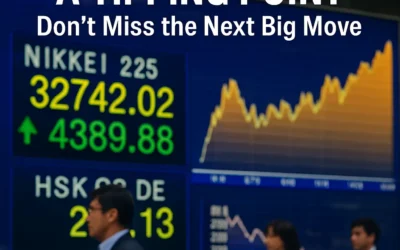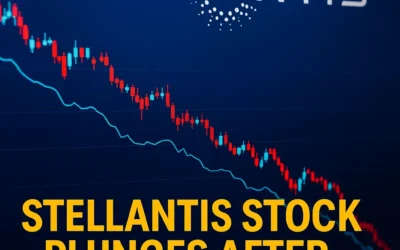Introduction
With the recent return of tariff-driven tensions following Donald Trump’s announcement of new trade barriers, the markets are once again under pressure. The S&P 500 has already shed over 12%, and many investors are uncertain about what lies ahead. Should you hold, sell, or buy? And what lessons can we draw from the last major round of tariffs during Trump’s first term?
This deep-dive is for our Bullish Stock Alerts community, to help you understand what happened during the last trade war, which sectors survived or even thrived, and how to make smart positioning decisions today. If you’d like to speed up the process and gain access to exclusive information, click here !
One of the best broker in Europe
If you’re ready to begin—or expand—your investment journey, our affiliate link for Trade Republic offers a special bonus: a €30 gift in shares when you complete three purchase transactions within ten days. Don’t miss out on this chance to jump-start your portfolio: trade republic.
What Happened During the 2018 Tariff War?
In 2018, Trump imposed broad tariffs on steel and aluminum, quickly escalating into a full-blown trade war with China. Market reaction was swift:
- The S&P 500 dropped nearly 20% by the end of 2018.
- Growth stocks, particularly in tech and consumer discretionary, saw their P/E ratios shrink by 30% to 50%.
- Value stocks, especially in energy and utilities, remained relatively stable.
Key lesson? Tariffs create uncertainty, reduce earnings forecasts, and compress valuations—especially for companies reliant on global supply chains.
How Long Did the Correction Last?
- Initial drawdowns started in February 2018.
- The worst came in Q4 2018, especially December.
- Markets began to recover in early 2019 once the Fed softened its tone and trade talks resumed.
Total duration of pain: around 10-11 months.
Sector Performance: What Held Up, What Collapsed?
Worst hit:
- Semiconductors & High-Growth Tech (NVIDIA, Meta): saw major P/E compression.
- Automotive & Consumer Goods: exposed to China, input cost spikes.
More resilient sectors:
- Energy (Petrobras, NAT, Hafnia): still buoyed by oil prices.
- Utilities & Defensive Yield Stocks: benefitted from sector rotation.
- RWA-Backed Crypto Projects (today’s perspective): like Ondo, Centrifuge, and Goldfinch, could weather the storm by being tied to real-world revenue streams.
What About P/E Multiples Then and Now?
Back in 2018, when tariffs first hit, many Big Tech companies saw a sharp contraction in their price-to-earnings (P/E) ratios. Meta, for example, went from a P/E of 32 down to 17 before gradually recovering to around 26 today. Microsoft followed a similar path, dropping from 32 to a low of 22, and now sits at 33.8. NVIDIA, one of the most volatile growth plays, saw its P/E fall from 40 to the 30–33 range, and it currently trades around 33. Amazon was by far the most extreme case, with a sky-high P/E of 250 in 2018, which plummeted to around 90 during the tariff-driven sell-off, and has since come down further to about 42. These historical shifts suggest that, if the current wave of tariffs mirrors the past, Big Tech valuations could still face another 20 to 40 percent compression from current levels.
These contractions suggest that Big Tech P/Es could still compress 20-40% from current levels if this tariff war unfolds similarly.
How to Protect Your Portfolio in a Tariff-Driven Market: In-Depth Breakdown
In times of uncertainty, especially under the weight of tariff-induced volatility, portfolio positioning becomes crucial. It’s not just about what you hold — it’s also about what you avoid. Here’s how to navigate this environment with a rational yet opportunistic approach.
Prioritize Real Economic Exposure
When markets are shaky, speculation gets punished. That’s why it’s essential to favor assets that are backed by tangible economic activity. Projects like Ondo Finance, Goldfinch, and Centrifuge aren’t just crypto tokens — they’re financial bridges connecting blockchain to real-world assets like US Treasuries, business loans, invoices, and tokenized real estate. These assets generate real yield from genuine borrowers and institutions, not hype or trading volume. This makes them far more resilient during downturns, and often decorrelated from broader crypto market volatility.
Contrast that with purely speculative tokens or meme coins, which often rely on sentiment alone. In bear markets, capital flees such assets rapidly, leading to extreme drawdowns. If your crypto portfolio is packed with altcoins that don’t produce any cash flow or aren’t tied to the real economy, you’re essentially investing in volatility — not value.
Lean Into Defensive Stocks and Energy
Names like Petrobras, Nordic American Tankers (NAT), and Hafnia are perfect illustrations of companies tied to real, essential demand — oil transport, fuel logistics, and industrial shipping. These firms not only trade at low P/E ratios, often under 10, but also offer robust dividend yields, backed by real revenues. In times of macro stress, this steady cash generation acts as a shock absorber for your portfolio.
Similarly, BrasilAgro provides a compelling angle on food security and land ownership. It monetizes agricultural land — an asset that doesn’t vanish in a crisis. It pays high dividends and offers inflation-linked upside.
Compare that with tech unicorns or growth stories that have yet to turn a profit. These companies often trade at 50x, 100x, or even 250x earnings (or worse — no earnings at all). In a tariff-fueled recession, those valuation multiples get crushed. The market suddenly remembers that profitability matters, and cash is king.
Reduce High-Risk Exposure
It may seem tempting to bet on microcap stocks with huge upside potential, like ClearOne or other penny stocks. But unless there’s a clear, near-term catalyst, these companies tend to suffer the most when liquidity tightens and risk-off sentiment dominates. They lack both investor confidence and financial resilience, often leading to steep, prolonged losses.
Likewise, trimming your crypto exposure — especially in high-beta altcoins — is wise when visibility is low. Altcoins amplify the market’s emotions: in euphoria they soar, but in fear, they collapse — often faster than they rose. A well-calibrated exposure to crypto should focus on quality and real-world linkage, not promises of future adoption that may never come.
The opposite — doubling down on speculative plays when the macro is turning against you — is how drawdowns become disasters. Protect capital first, deploy second.
Keep Quality Tech, but Prepare for Pullbacks
Even in tough macro cycles, some tech giants remain strongholds. Meta, Microsoft, and NVIDIA have shown they can navigate headwinds, innovate through downturns, and bounce back stronger. Their fundamentals are solid, and their business models are diversified and cash-generating. However, these companies are not immune to valuation compression, especially in tariff-induced slowdowns. Historically, even these giants saw their P/E ratios shrink by 30–50% during trade wars and Fed tightening cycles.
That’s why it’s prudent to hold them — but with the mental flexibility to expect drawdowns, and to buy more when the risk-reward becomes compelling.
ETFs like WEBH offer access to these names with diversification and lower idiosyncratic risk. But beware: ETF investors often overlook underlying valuation levels, and in a market-wide correction, ETFs fall along with their components.
Understand Liquidity Restrictions on Strategic Holdings
Certain strategic plays offer significant long-term benefits, but with a price: illiquidity. Take the example of ENGIE shares held in nominative form. By accepting to lock up your shares for two years, you unlock a 10% loyalty bonus on all dividends — for life. That’s a powerful source of yield in an uncertain world.
But you need to plan around the fact that these shares cannot be sold instantly. A reversal requires a formal conversion to bearer form, with delays and fees. If you’re someone who may need to rebalance or raise cash quickly, this constraint can be problematic.
The flip side — holding only liquid but low-yielding assets — may give you flexibility, but at the cost of long-term wealth compounding. The best approach is balance: identify which part of your portfolio can be safely “locked” for yield, and which part must stay nimble.
Looking to Educate Yourself for More Investment Strategies?
Check out our free articles where we share our top investment strategies. They are worth their weight in gold!
📖 Read them on our blog: Investment Blog
For deeper insights into ETF investing, trading, and market strategies, explore these expert guides:
📘 ETF Investing: ETFs and Financial Serenity
📘 Technical Trading: The Art of Technical & Algorithmic Trading
📘 Stock Market Investing: Unearthing Gems in the Stock Market
📘 Biotech Stocks (High Risk, High Reward): Biotech Boom
📘 Crypto Investing & Trading: Cryptocurrency & Blockchain Revolution
Conclusion
In a world shaken by trade wars, rate hikes, and macro shifts, the difference between speculation and sustainability becomes stark. Prioritize assets tied to real activity, real cash flow, and real demand. Avoid the siren song of hypergrowth when the wind blows the other way. Position defensively, hold strategically, and you’ll not only survive the next wave — you’ll come out of it stronger than most.
Let your portfolio be bullish… intelligently.









0 Comments